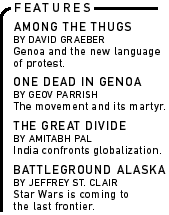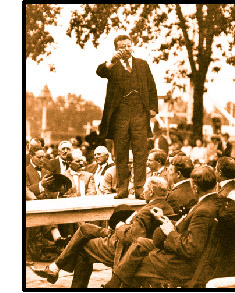|
|
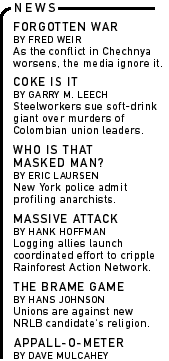
|
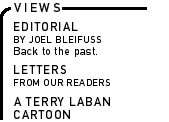
|
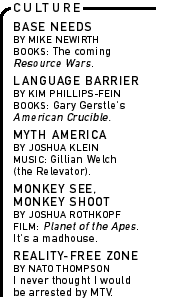
|
|
|
| |
|
|
|
American Crucible: Race and When he was a young man during the Great Depression, Richard Hofstadter married a beautiful radical and briefly joined the Communist Party. "I hate capitalism and everything that goes with it," he wrote to a friend. The economic crisis, he would later reflect, "made it clear as day that something had to change." But the postwar era extinguished the passions of those years, and in 1947 Hofstadter
In the stifling atmosphere of the '50s, Hofstadter turned his frustrated radicalism against popular movements--the Populists and the Progressives--arguing that they too were trapped by the country's warped political culture. The Age of Reform is often viewed as Hofstadter's conservative turn, but it seems more an extension of his original radical critique. Rebels and leaders alike resembled overgrown children, motivated by incoherent dissatisfactions, incapable of understanding their real conditions of life. Hofstadter was not alone. Left-leaning historians throughout the 20th century have grappled with the yawning gulf between America's language of freedom and democracy and the darker truth of its history. They start out studying conflicts between workers and employers, blacks and whites, scrutinizing the actions of the elite that we were supposed to have left behind in Europe. But when they look for these reflected in our political life, they discover only rhetoric about the land of the free and the home of the brave. They then grow obsessed with the American political vernacular, its distorted reflection of the conflicts that once held their attention. Some, like Hofstadter, are fascinated by the ingenious opacity of our political language, and remain conscious of its limitations. But others are seduced by the language itself, and treat the rhetoric of our national life as though it defined reality. Gary Gerstle--author of one of the first major syntheses of 20th-century American history, American Crucible--is among the latter. Gerstle began as a labor historian. His first book, Working-Class Americanism, showed how the decline of ethnic identity in the Great Depression was a necessary precondition for the rise of unions in New England textile towns. Thanks to the aggressive use of patriotic language by CIO organizers, workers came to identify with unions and see themselves as Americans. American Crucible, by contrast, is a study of "American nationalism" in which struggles about membership in this "imagined community" turn into battles over rhetoric and identity, images and language. This intellectual journey--from money and power to political culture--echoes Hofstadter's. But where Hofstadter continued to be riveted by the failure of the American tradition to capture the conflicts that teem beneath the surface of events, Gerstle treats political language itself as the subject of conflict. The result is a book that glides across the symbolic surface of American history, but which is in its conclusions more pessimistic than anything Hofstadter ever wrote. "What is an American?" Crevecouer asked in the 18th century. For Gerstle, the struggle to answer this question has been the story of the 20th. The responses, he suggests, have been contradictory. One American identity professes loyalty to the "core political ideals" of the United States: the "fundamental equality of all human beings, every individual's inalienable rights to life, liberty and the pursuit of happiness." These ideals are not linked to race or nationality; they arise from the political constitution of the nation. But there is another powerful nationalist tradition, which conceives of America "in ethno-racial terms, as a people held together by common blood and skin color and by an inherited fitness for self-government." What's more, Gerstle argues, this racial nationalism is not an aberration to American liberalism; it is not confined to hidebound conservatives or yokel Southerners. On the contrary, American liberals and even at times radicals have affirmed that the only true Americans are white. Gerstle opens American Crucible with Theodore Roosevelt, the unlikely father of modern progressivism. TR delivered blustery diatribes against corporate power, but he also subscribed to a romantic breed of racism. He believed that the history of the world was one of racial struggle and survival of the fittest. Defending citizens against the predations of big business, his America was for whites only. The boundaries of race, Gerstle suggests, also circumscribed the egalitarian spirit of the New Deal and support for Franklin Delano Roosevelt. John L. Lewis said that the CIO was a "return to first principles--a resurrection in practice of the rules laid down by the Fathers of the Republic." Yet at the same time, the industrial workers in WPA murals were brawny and white. The "migrant mother" in Dorothea Lange's famous photograph was an anxious Anglo-Saxon. "In the adoration of FDR we can detect a desire on the part of southern and eastern Europeans to gain acceptance in the American nation by claiming for themselves a 'Nordic father,' " Gerstle writes. FDR, patrician to the core, once told a Catholic aide, "This is a Protestant country, and the Catholics and Jews are here on sufferance." During the fight against the Nazis, the U.S. Army remained segregated--right down to its blood supply. "The exclusion of blacks from combat platoons ... denied servicemen ... the opportunity to challenge and to reconstitute their racially inflected conception of American community," Gerstle writes. The tension between the two nationalisms continued through the civil rights movement. Martin Luther King Jr. appealed to the civic tradition of the country to claim equal rights for African-Americans in a land devoted to democracy and equality. Yet "white Americans who could not accept the elimination of race as a defining characteristic of American nationhood" called on the alternative "racial" tradition, meeting the civil rights movement with massive resistance. The "bonds of nationhood" splintered in the '60s, as black power radicals, angry at reform's slow pace, raised their fists with Malcolm X, while anti-war protesters burned the flag, their civic ideals beaten out of them by the cops at the Chicago Democratic National Convention. What remains today is multiculturalism, replacing the "common cause" of the nation with local solidarities of race, gender and ethnicity. This new ethos, Gerstle fears, fails to create a sense of common purpose, one that can link people across classes. It is no surprise that its rise has accompanied the shattering of the welfare state. Today, our choices are between "a strong, solidaristic and exclusionary identity of the sort that has existed in the past" and "a weaker identity, one that makes fewer claims on us, that allows us to cultivate strong ethnic, religious, regional or transnational identities, but that is capable of generating only thin loyalty to nationalist ideals and limited ties of feeling and obligation to [other] Americans." In its ambivalent depiction of a lost national community, American Crucible echoes the work of Todd Gitlin and, to a lesser extent, Christopher Lasch. Like them, Gerstle believes that reform depends upon a strong sense of national community, and that American leftists can only succeed by wrapping their claims in the flag. The legacy of the '60s, for these thinkers, is that radicalism must be patriotic; when it isn't, Reagan is the result. But unlike Lasch and Gitlin, Gerstle cannot simply endorse a sentimental depiction of America's democratic past. He is too conscious of the darker currents of the country's national identity to think that it's unproblematic for progressives to claim the mantle of nationalism, yet he fears that the anemic sensibilities and fragmented selves of liberal pluralism can never spur a vigorous democracy, nor a movement for economic reform. This sad impasse seems a far cry from Hofstadter's scathing skepticism. The implication of Hofstadter's ruthless criticism of the American tradition was the certainty that real political change would have to spring from a challenge to the dominant political language. Gerstle, by contrast, thinks that national ideals are needed to rally Americans for reform. So while he cannot entirely identify with the American tradition, he is not yet ready to dismiss it either. The generation of labor historians that preceded Gerstle--David Montgomery, Eugene Genovese, Herbert Gutman--wrote about race less than Gerstle does, it's true. But when they did, they did not share his sense of futility. They didn't have to, because the way that they thought about race was fundamentally different. They did not think that blacks were "excluded" from the nation in an existential act of national self-definition. Segregation and slavery, after all, did not really "exclude" blacks at all. They created a subordinate group within the United States that lacked access to resources and to political power, and which could be exploited to the benefit of elites--who were less interested in metaphysical questions about the "defining characteristics of the nation" than they were in safeguarding their power. On a deeper level, because these historians believed that the real conflicts in American life were about politics and economics, not the national community, they did not see reform as the crowning act of communal self-awareness. It was more likely to reflect division and conflict. Democratic politics were about struggle against elites, not people coming together. Along with New Left political theorist Sheldon Wolin, these historians believed that democracy was "fugitive," elusive, born of a challenge to established orders and hierarchies. It required the transformation of self-awareness, the destruction of antiquated bonds and old myths of community--not the legitimating language of the the nation. The rebellious historians of the '60s and '70s wrote against what they believed to be the stultifying scholarship of Hofstadter. But in a way, Gerstle's history--despite its surface narrative of conflict--makes the labor historians almost the allies of Hofstadter. They knew, as Hofstadter did, that the language of American politics obscured more than it revealed, and they refused to make peace with the evasiveness of the national myth. The failure of Depression-era politics led to Hofstadter's astringent vision, his rejection of nostalgic America. The cutting cynicism that resulted from his disappointment--like the labor historians' description of the country's secret history--was born of hope for something better. For Gerstle, the political frustrations of the past quarter century
seem to have resulted in the opposite outcome. He is left clinging
to the kitsch of national tradition, even though he cannot help
but be repelled by much of what he finds there. The gulf between
his hopeless faith and Hofstadter's critical spirit is not one of
historical talent. It is a sign of political pessimism, of history
written in an age that has lost the sense that the world might change.
|




